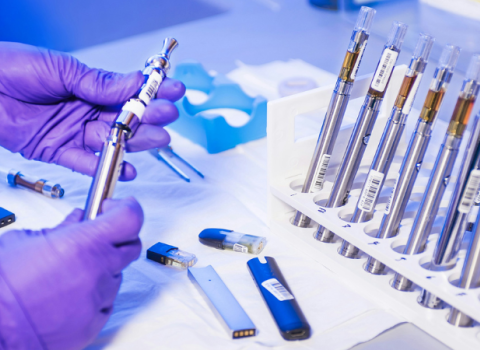Changes to the European Medicines Agency’s regulatory pathway for paediatric medicines and rules supporting the development of therapies for rare diseases, combined with the increasing number of drugs that are losing patent protection, are creating new, lower-cost investment strategies in biotech.
Mainstream investors have long associated early-stage biotech investment with high risk, and as a sector in which the quid pro quo for potential high returns is a sizable and long-term investment in unproven technology.
Funding a large portfolio – and the many years of investment needed to get a product to market – demand an extended pay-back period. Successes need to be big, and have a long period of patent protection, with returns from successful products needed to offset losses elsewhere in the portfolio.
Now however, the market is starting to change as niche life sciences investment teams target products that have significantly different risk profiles from traditional biotech investments. These products have continued to generate impressive returns - even in the current economic turmoil.
Attractive macroeconomics
It’s no secret that the life sciences sector is driven by attractive macroeconomics, as ageing populations and western lifestyles drive an ever-increasing demand for healthcare.
But more recently rare diseases and paediatric drugs have started to shape some aspects of the sector. With star-performing patent-protected drugs – which have sustained ‘Big Pharma’ over many years reaching the end of their patent lives and becoming open to generic petition, there is a drive among large pharma companies to fill pipelines with new products.
This includes identifying opportunities in rare diseases and in developing drugs specifically for children, two areas which have historically presented difficulties in terms of gaining approvals or were considered uneconomic due to the limited size of the final market.
A separate system of approvals for rare and ultra-rare diseases – or Orphan diseases as they are more commonly known – has existed in the US since 1983. In Europe, a similar system, administered by the Committee on Orphan Medicinal Products, is intended to drive the development of products which might otherwise lack a sufficient profit motive under conventional approval frameworks.
Once Orphan Drug status is granted there are tax incentives, enhanced patent and market protection, and the possibility of financial subsidies for clinical research. Similarly, the EU’s Paediatric Use Marketing Authorisation (PUMA) is specifically aimed at allowing generic drugs to be re-approved for the paediatric market, offering similar benefits for a product as Orphan legislation.
Reducing the cost of development
These regulatory frameworks mean the cost of getting a product to market can be a fraction of what it would be for a new drug going through the conventional European Medicines Agency or US FDA approval process. Reduced regulatory charges, smaller clinical trial requirements, and tax incentives all reduce the development cost – and the ultimate price – of these products. This in turn significantly increases the speed to market, benefitting both investors and patients alike. It also bestows the underlying assets with an attractive risk profile and return-on-capital potential.
Take the case of the first product approval under PUMA in late 2011. This was for Buccolam, an oral treatment for acute childhood epilepsy. The product developed by Auralis, a start-up backed by Aquarius Equity Partners, went from concept to market in under three years. Buccolam is based on a generic drug, so much of the technical risk associated with biotech investment was removed. The drug was reformulated to provide a better mode of delivery for children, enabling a PUMA approval to be sought. This in turn removed the need for onerous clinical trials and provided European market protection for paediatric use over a number of years.
The product got to market quickly and cost-effectively and was subsequently sold to the US company Viropharma in 2011 – generating a return of six times the investment in three years.
Capitalising on novel science
EU regulations are also driving the development of novel therapies for treating rare diseases, and at the same time capitalising on advances and discoveries coming out of Europe’s science base. One example is the increased understanding of the ‘microbiome’ – the ecosystem of bacteria that exist within the human body. A pioneer in this field is an Aberdeen-based start-up called GT Biologics, which was the first company in the world to identify a particular strain of bacteria in the microbiome and link it to a specific disorder.
Based on this discovery, GT Biologics is developing an orally-administered live product for treating paediatric Crohn’s disease, a serious bowel disorder. Ultimately, the company aims to use Orphan regulation to deliver a cost-effective and safe treatment for a disease that is currently untreatable, and do so in a relatively short space of time.
Project-driven to reduce outlay
Companies like those described above, do not need the large upfront capital investments to build infrastructure, labs and scientific teams, as has previously been the case in biotech investment. They have access to labs via collaborations, and have world-leading scientists at the helm. But they are fundamentally ‘project’ or ‘asset’-driven, rather than focussed on company growth. This means there is a greater efficiency of investment, with reduced initial capital outlay and low cash burn.
It is understandable given current economic circumstances that some aspects of venture investing have gone out of fashion. However, the recent resurgence in activity in emerging areas of life sciences is almost certain to see it playing a larger role in asset portfolios over the course of the next few years.
Paul Morton is a partner at Aquarius Equity Partners, an investor in early-stage life sciences companies based in Manchester, UK.
A version of this article has appeared on www.altassets.net





 A unique international forum for public research organisations and companies to connect their external engagement with strategic interests around their R&D system.
A unique international forum for public research organisations and companies to connect their external engagement with strategic interests around their R&D system.